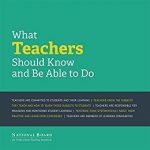Here is some of the information I recently shared in my March newsletter. Each newsletter has a specific focus. This month is focused on pedagogy, adult learning and teaching information. If you would be interested in receiving my newsletters, please head over to my contact page and sign up.
Tidbits, Updates and Resources
1. Classtool.net offers a variety of games, puzzles, and tools to make classes fun, interesting and effective.
2. Criticalthinking.org offers an interactive model detailing the analysis and assessment of reasoning. Why is the analysis of thinking important? “Everyone thinks; it is our nature to do so. But much of thinking, left to itself, is biased, distorted, partial, uninformed or downright prejudiced. Yet the quality of our life and of what we produce, make or build, depends precisely on the quality of our thought. Shoddy thinking is costly, both in money and in quality of life. If you want to think well, you must understand at least the rudiments of thought, the most basic structure out of which all thinking made. You must learn how to take thinking apart.” Thinking is defined by the eight elements that make it up:
The post includes a helpful graphic on the elements of thought and how to use them.
3. An article, published at Er.educause.edu, titled Pedagogy, Technology, and the example of Open Education resources by Robin DeRosa and Scott Robison, reminds us that technology is not the focus of the curricula, but, instead, we should start with a vision and then identify the technologies that help achieve that vision. The value is not in the tool, but in how the tool is used. “When no meaningful relationship exists between the technology and pedagogy, the tool itself loses value.”
4. “Three tools for teaching critical thinking and problem-solving skills” by Katrina Schwatz discusses the idea of integrative thinking—a term to describe looking for solutions through the tensions inherent in different viewpoints. One of the tools is called the Ladder of Inference, a model developed by professors Chrisy Argyris and Donald Schön of Harvard. A second tool is called the Pro/Pro chart and the third tool is Provoking Self Reflection.
STUDIES, ARTICLES, and RESOURCES
I receive a weekly update on anything published anywhere on the internet that includes information about teaching and learning. Much of it is personal blogs, stories about athletes that are injured, etc., but some of the information can be helpful to practitioners. I try to glean the best of the information and provide a brief synopsis of the information and a link to find the full item yourself. If you have any problems with the links, please let me know, or if you come across any information that you think would be good to share, please also feel free to pass that information along to: info@holistichealingarts.net
1. The Creativity Post published an article by Noa Kageyama, titled 19 Things That Great Music Teachers Do. While the article references a study done by Robert Duke and Amy Simmons with artistic teachers, the information is applicable to anyone teaching. After observing 3 different teachers of three different instruments, and comparing their techniques and successes, the researchers identified 19 key elements that were common to each teacher. The elements fall into three broad areas: Goals and expectations, Effecting Change, and Conveying information.
2. The article “Everyone, or Nearly Everyone, Has the Wrong Idea About Vocational Education” by Ken Gordon, points out that “some see vocational education as something apart from their idea of education. Why? Ted Dinersmith and Tony Wagner, in their book Most Likely to Succeed, point to a reason: Vocational education, in the eyes of many middle- and upper-class parents, is one step removed from juvenile delinquency.” The article looks at the impact of this attitude and what vocational education can be.
3. Time Higher Education published, in Dec 2015, key predictions from the Open University and SRI International report. Titled Innovating Pedagogy 2015: the 10 technological trends set to transform education, the trends in approximate order of immediacy to implementation are:
4. TED-Ed Innovating Educators and TED-Ed community rated teaching support apps and recommended the following 25 apps.
5. A technology tools that can help teachers and students: Wipebook—Reusable whiteboard notebook. What happens when you cross a dry erase board with a notebook? You get an endlessly reusable notebook—one you can fill over and over with sketches, diagrams, notes, lists, or your day’s to-do’s. The forgiving, hypergloss film pages encourage unlimited drafts but limit smudging. Each Wipebook comes with a smudge-proof pen so your thoughts and projects stay intact—until you decide to re-use a page. Starting price: $39.95 at Grommet
6. First published in 1989 and updated in 2016, What Teachers Should Know and Be Able to Do articulated the National Board for Professional Teaching Standards’ Five Core Propositions for teaching:
 Teachers are committed to Students and Their Learning
Teachers are committed to Students and Their LearningThe updated version is available as an ebook from Kindle for $4.99